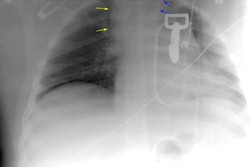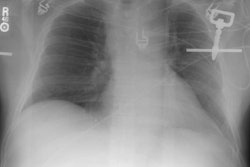Trauma and critical care patients are the most difficult to move though a department and the authors’ advise in this area is invaluable.
Imaging in Trauma and Critical Care by Stuart E. Mirvis and K. Shanmuganathan,
2nd ed.
Elsevier Science, St. Louis, 2003, $149
This update on trauma and critical care, based on the authors’ extensive experience at the University of Maryland School of Medicine in Baltimore, offers tools to appropriately manage the trauma patient, from the initial radiograph through a protracted ICU course.
The current edition has been expanded from 11 to 17 chapters, with increased focus and detail on several areas, including abdominal intensive care imaging, penetrating thoracoabdominal trauma and the application of nuclear medicine studies for acute. There also is a separate section on trauma imaging of the pediatric patient, and a prophetic view of trauma intervention and imaging in the not-so-distant future.
Also new are high quality CT, MRI, angiography, fluoroscopy, and ultrasound reproductions that clearly reveal findings. Classic plain film images are preserved from the prior edition. Although they are of marginal quality, the findings are generally still accessible.
From angiography to extremity fracture studies, you’ll find the answer here. Standard classifications are enumerated (i.e. Garden classification for femoral neck fractures). Additionally, the description of scanning techniques and protocols includes information on how to optimize results for difficult patients.
I’m sure I’m not alone in the experience of having hoards of people crammed in the CT suite, trying to steal a glance at the screen. More often than not, we determine right then and there, whether the patient proceeds straight to the OR, or heads to the ward for serial labs, medical intervention, and watchful waiting. Trauma and critical care patients are the most difficult to move though a department and the authors’ advise in this area is invaluable.
Finally, the authors demonstrate a vested interest in collaborating with other specialties. As such, they have added clinical and pathophysiological details to facilitate communication with referring services. Kudos to the authors, and contributors, for a job well done.
By Dr. G. Eric MorganAuntMinnie.com contributing writer
January 20, 2004
Dr. Morgan is a radiology resident at the Madigan Army Medical Center in Tacoma, WA.
The opinions or assertions contained herein are the private views of the author and are not to be construed as official or as reflecting the views of the Department of Defense.
The opinions expressed in this review are those of the author, and do not necessarily reflect the views of AuntMinnie.com.
Copyright © 2004 AuntMinnie.com



















